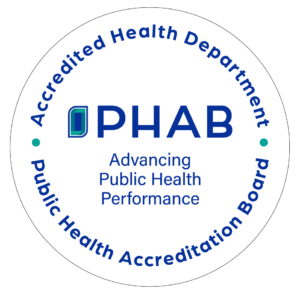What is foodborne illness?
Foodborne illness results after consuming contaminated food or beverages. Symptoms are often flu-like in nature, and may include vomiting, diarrhea, nausea, and stomach cramping.
During business hours (8:00 a.m.-5:00 p.m.), contact the Health Department at 443-877-2305 to report cases of foodborne illness associated with a food service facility. You will be asked to provide the name and location of the facility, the date and time of visit, the food consumed, and symptoms. Standard investigation procedures also require a review of your 72-hour food history, and the collection of stool and food samples. Leftover foods must be refrigerated prior to collection. The Health Department will determine if leftover food samples will be collected.
Contact your health care provider. Positive identification of foodborne pathogens can be confirmed through stool or blood analysis.
Preventing Foodborne Illness at Home
Food safety at home is simple and requires little effort.
1. Adequate handwashing continues to be the most basic aspect of safe food handling. Wash hands with soap and warm water prior to handling foods. Dry hands with paper towels, not cloth towels. Cloth towels hold moisture and are a breeding ground for micro-organisms.
2. Clean and sanitize food contact surfaces prior to food preparation. Bleach is an inexpensive sanitizer. Two teaspoons of bleach per gallon of water will do the trick.
3. Keep raw foods separate from ready to eat foods during preparation and storage.
4. Keep foods at safe temperatures. (Cold foods less than 40 degrees F, hot foods above 140 degrees F)
5. Cook foods thoroughly prior to serving. Use a metal stem thermometer to measure the internal temperature of foods. The color of cooked meat is not always an accurate indicator of food temperature.
USDA Recommended Safe Minimum Internal Temperatures
- Steaks & Roasts–145 degrees F
-
Fish–145 degrees F
-
Pork–160 degrees F
-
Ground Beef–160 degrees F
-
Egg Dishes–160 degrees F
-
Chicken Breasts–165 degrees F
-
Whole Poultry–165 degrees F
For additional information about preventing foodborne illness, visit the Food and Drug Administration website.
For tips on safer eating out, visit:
Fact Sheets
Visit related sites for additional consumer food safety information:
- Gateway to Government Food Safety Information
- FDA Consumer Advice and Publications
- Mercury in Fish and Shellfish or try this website
- Food Product Dating–“Sell By”, “Use By”, “Best Used By” What does is all mean?
- Food Recalls
- Food Talk


